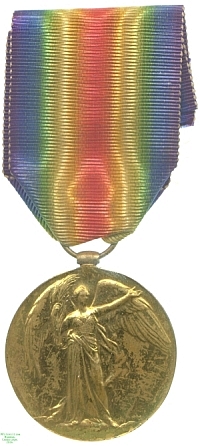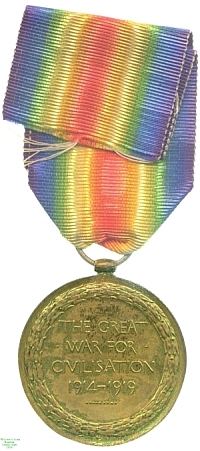Allied Victory Medal 1914-1918 (British), 1919

Obverse, Victory standing at centre with a wreath and a palm branch |

Reverse, the inscription with a border |

Obverse, Victory standing at centre with a wreath and a palm branch |

Reverse, the inscription with a border |
When the Great War of 1914-1918 had ended, there was a genuine feeling among the victorious Allies that their military efforts had been instrumental in preserving modern civilization, and this and the united spirit of the Alliance were commemorated in a combined issue of medals to those who had seen active service during the conflict. 13 nations in all issued a variety of this medal; all shared the rainbow ribbon and suspension, and all but the Japanese, who lacked a comparable symbolic figure, used a form of Victory on the obverse and a legend on the reverse.
Those who had fought in the British Armed Forces were already entitled to the British War Medal, of course, and if they had served from early on, the 1914 or 1914-15 Stars. The Victory Medal thus became an additional award in Britain, but for many other countries it was the sole badge of participation in the War.
The medal was issued unnamed, and it is not known to whom this example was awarded. Lester Watson purchased it from the London dealers Baldwin at some point before 1928.